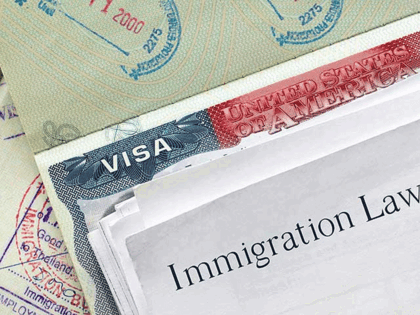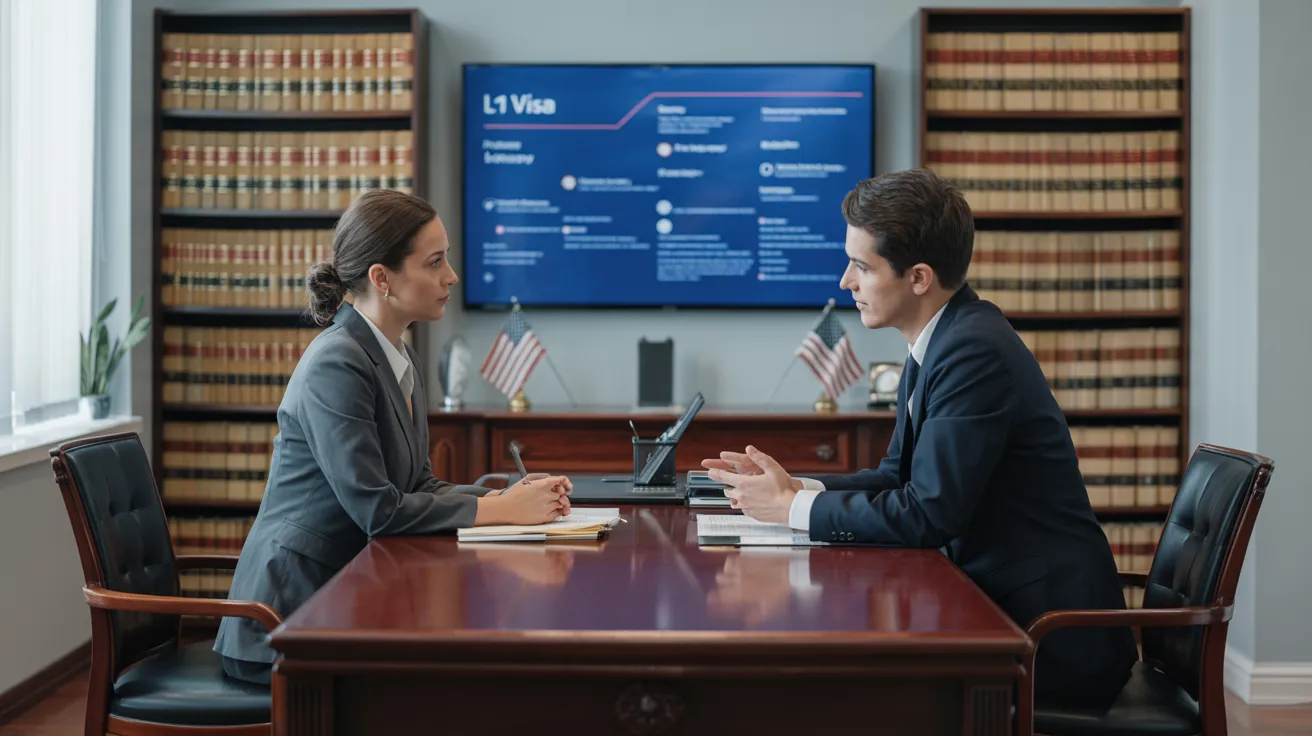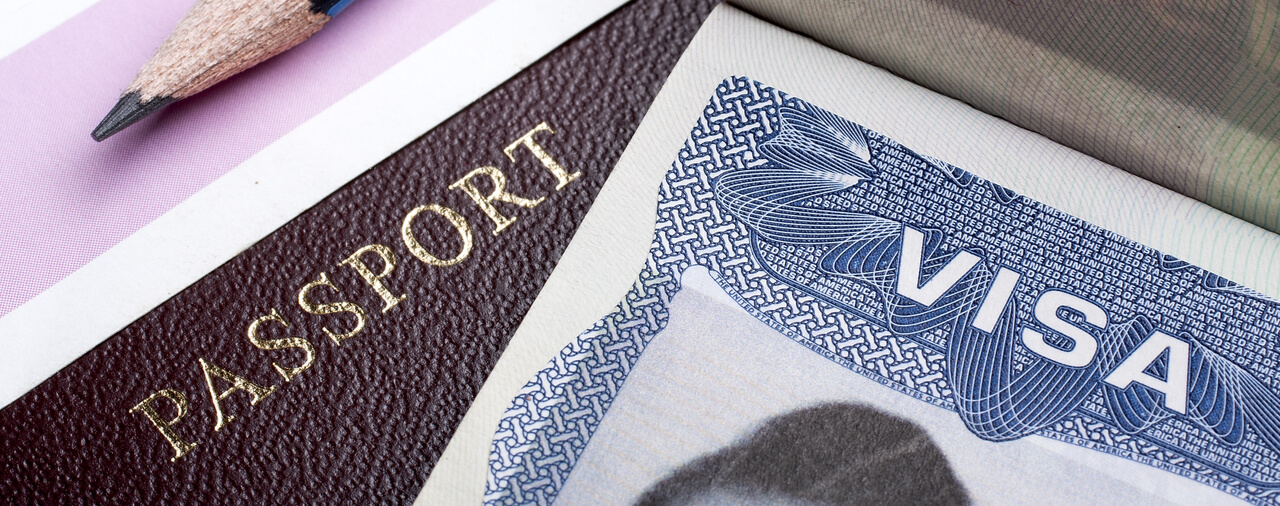L1 Visa for Investors
Wiki Article
Opening Opportunities: A Comprehensive Guide to the L1 Visa Process
The L1 visa process provides a vital pathway for international firms looking for to transfer essential workers across borders. Recognizing the nuances of eligibility standards, the differences in between L-1A and L-1B visas, and the intricacies of the application process can significantly influence a candidate's success. However, steering this facility landscape is not without its obstacles, and mindful attention to documents and company sponsorship is vital. As we discover the essential parts of this process, the techniques for getting over possible barriers will certainly become evident, revealing exactly how informed preparation can open a globe of opportunities.Comprehending the L1 Visa
Recognizing the L1 visa entails acknowledging its value as a crucial device for multinational firms seeking to move knowledgeable employees between worldwide workplaces. This non-immigrant visa category assists in the movement of execs, managers, and specialized understanding employees to the United States, therefore enabling organizations to preserve operational connection and harness global ability successfully. The L1 visa is divided into two primary categories: L-1A for supervisors and execs, and L-1B for employees having specialized knowledge.The L1 visa serves an essential duty in enhancing a company's one-upmanship in the global industry - L1 Visa. By permitting business to move their essential workers, services can ensure that essential projects are handled by qualified people who are currently acquainted with the business's society and functional processes. This inner transfer mechanism not just fosters expertise sharing however also advertises technology and cooperation throughout borders.Moreover, the L1 visa is commonly preferred for its fairly simple application process compared to various other visa classifications, as it permits twin intent, allowing owners to seek long-term residency while on a short-term copyright. This attribute makes the L1 visa particularly appealing for both employers and staff members, as it improves the pathway for experienced specialists to develop lasting residency in the United StatesQualification Criteria
Eligibility for the L1 visa pivots on a number of crucial standards that guarantee both the employee and the company meet particular certifications. This non-immigrant visa is developed for international firms to transfer staff members from consular services to U.S. counterparts.Firstly, the company needs to be a certifying organization, which consists of a moms and dad firm, branch, associate, or subsidiary of a united state business. The business should have been doing company for at the very least one year both in the U.S. and abroad. This ensures that the company has enough functional security and a genuine presence.Secondly, the employee needs to hold a managerial, executive, or specialized knowledge setting. For L1A visas, the candidate needs to demonstrate managerial or executive qualifications, while L1B visas concentrate on specialized expertise related to the organization's products, services, or processes. In addition, the staff member has to have worked for the international entity for at the very least one continual year within the last 3 years before their application.Lastly, the staff member's duty in the U.S. must align with their previous position, making sure that their skills and knowledge are leveraged for the business's benefit.Kinds of L1 Visas
The L1 visa group makes up 2 primary types made to facilitate the transfer of employees within multinational business: the L1A visa for supervisors and executives, and the L1B visa for staff members with specialized expertise. Each kind offers distinct functions and has particular qualification criteria.The L1A visa is tailored for people that hold managerial or executive positions within a firm. This visa makes it possible for top-level workers to transfer to an U.S. branch, subsidiary, or associate of the very same organization. Applicants for the L1A visa must show that they have actually been used in a managerial or executive ability for at the very least one continuous year within the previous 3 years before their application. Additionally, this visa uses a much longer period of keep, at first approved for 3 years, with the opportunity of expansions for up to seven years.In contrast, the L1B visa is intended for experts with specialized knowledge pertaining to the firm's products, solutions, or processes. To qualify, applicants have to prove that their experience is critical to the organization and that they have actually worked for a minimum of one continuous year within the last three years in a function that required this specialized knowledge. The L1B visa is at first approved for 3 years, with expansions available for as much as five years.Both visa types are crucial for firms seeking to enhance their worldwide operations by leveraging proficient employees, therefore advertising innovation and effectiveness within the U.S. market.Application Process
Steering through the L1 copyright process entails several vital steps that should be meticulously complied with to guarantee a successful result. The process begins with the united state company, that need to first develop eligibility by showing a qualifying partnership with the foreign entity and confirming that the employee meets the certain needs for the L1 visa classification being sought.Once eligibility is verified, the company initiates the procedure by submitting Form I-129, the Application for a Nonimmigrant Employee, with the United State Citizenship and Immigration Services (USCIS) This kind should be gone along with by a comprehensive description of the job tasks to be executed, the organizational framework of both the united state and international entities, and the worker's qualifications. It's essential to verify that all info is exact and full, as noninclusions or errors can lead to hold-ups or denials.Upon authorization of the I-129 request, the following step entails the worker obtaining the L1 visa at a united state embassy or consulate in their home country. This phase calls for the completion of Form DS-160, the Online Nonimmigrant copyright, and scheduling a meeting. During the meeting, the candidate needs to present proof sustaining their credentials and the company's petition.After the visa is granted, the worker can enter the United States to operate in the marked function. Overall, cautious prep work and adherence to each step of the application process are crucial for a successful L1 visa result.Required Documents

Crucial Types Required
Navigating the L1 Visa procedure needs cautious interest to the essential types and documents essential for an effective application. The main type required is the Kind I-129, Request for a Nonimmigrant Worker, which need to be finished and submitted by the U.S. employer. This form lays out the information of the work deal and the credentials of the worker seeking the L1 Visa.Alongside Form I-129, the applicant will certainly need to complete Form I-539 if coming with relative are likewise getting visas. Furthermore, the employer has to give evidence of the certifying connection between the united state entity and the foreign entity, usually requiring the submission of business papers such as short articles of incorporation or monetary statements.Moreover, it is important to consist of the L Category Supplement to Kind I-129, which defines the kind of L Visa being requested-- either L-1A for managers and executives or L-1B for staff members with specialized understanding. Finally, candidates ought to guarantee that all kinds are signed and dated properly, as incomplete submissions can bring about hold-ups or denials. Effectively setting up these vital types lays the foundation for a smoother L1 copyright procedure.

Supporting Proof Requirements
Sustaining documentation is necessary for an effective L1 copyright, as it substantiates the cases made in the application. Candidates must provide a variety of files to demonstrate qualification for the visa, which is categorized into two primary types: proof of the qualifying partnership between the U.S. and foreign entities and evidence of the applicant's qualifications.To develop the partnership, applicants need to submit paperwork such as business business graphes, economic statements, and proof of possession. These files validate that the international company has a qualifying partnership with the united state company, whether as a moms and dad company, subsidiary, branch, or affiliate.For the candidate's qualifications, crucial files include an in-depth employment letter from the international company, describing the candidate's task title, tasks, and period of work. Furthermore, academic qualifications, such as degrees and diplomas, need to be supplied to show the candidate's know-how in the appropriate field.Company Sponsorship Records

Typical Difficulties
Navigating the L1 visa procedure presents several common difficulties that candidates must recognize. Trick concerns often consist of stringent documentation requirements, possible hold-ups in processing times, and the need for rigorous legal conformity. Comprehending these obstacles can assist candidates better prepare and mitigate threats throughout their copyright trip.Documentation Requirements
The L1 copyright procedure commonly provides significant obstacles associated to paperwork requirements. Candidates must give comprehensive paperwork to establish qualification, which can result in complication and possible hold-ups. Secret files include proof of a certifying relationship in between the U.S. and foreign company, evidence of the applicant's employment history, and thorough information concerning the task duty in the U.S.One common obstacle is collecting enough evidence to show the nature of the certifying partnership. Business often struggle to existing clear organizational graphes or economic statements that highlight the connection in between the entities. Furthermore, guaranteeing that letters of support from employers accurately reflect the candidate's work tasks and credentials is crucial, as obscure descriptions can lead to denials.Another problem develops from the demand for comprehensive work summaries that line up with the L1 visa classifications. Applicants must verbalize not only their current function however additionally their supervisory or customized understanding responsibilities clearly. This necessitates a comprehensive understanding of both the applicant's placement and the regulative language used in L1 applications.Processing Time Delays
Experiencing hold-ups in handling times is a common difficulty encountered by L1 visa candidates, commonly leading to disappointment and unpredictability. A number of factors add to these delays, consisting of high application quantities, increased scrutiny of applications, and management backlogs within the U.S. Citizenship and Migration Solutions (USCIS) Candidates might discover that processing times can vary greatly relying on the service facility managing their application, as each facility has its own work and effectiveness levels. Additionally, the intricacy of the candidate's situation, such as the demand for extensive documentation or explanation, can further expand wait times.In some circumstances, problems associated with the applicant's present immigration condition or previous visa background may likewise lead to extra hold-ups, as USCIS may require further review or information. It is important for prospects to continue to be aggressive during this period, keeping open interaction with their employers and legal reps to address any kind of potential problems promptly.Understanding these processing time obstacles can help L1 visa applicants prepare for possible delays and alleviate the effect on their L1 Visa shift and profession strategies. Persistence and persistance are crucial virtues in maneuvering this elaborate process.Legal Conformity Issues
Numerous L1 visa candidates run into lawful compliance issues that can complicate their journey towards getting the visa. Understanding and adhering to the particular guidelines established by the united state Citizenship and Migration Provider (USCIS) is vital. Usual challenges consist of showing the certifying partnership in between the foreign and U.S. employers, as well as proving that the candidate has the requisite specific understanding or managerial capacity.Additionally, applicants should provide comprehensive documents outlining their job tasks, company structure, and monetary stability of the united state entity. Insufficient or incorrect documentation can cause delays or perhaps rejections. Companies must also assure that they abide by labor laws, consisting of wage and working condition requirements, which can affect visa eligibility.Another usual problem entails preserving conformity with the regards to the visa as soon as granted. Modifications in employment condition, job responsibilities, or company framework can demand modifications to the visa, which otherwise attended to without delay can result in legal issues. As an outcome, remaining informed concerning compliance demands and seeking legal advice when required is important to browse the intricacies of the L1 visa process successfully.Tips for Success
Success in the L1 copyright process usually depends upon meticulous preparation and focus to detail. To enhance your opportunities of authorization, start by extensively comprehending the eligibility requirements for both the L1A and L1B visa categories. Examine whether your setting at the business qualifies as managerial, exec, or specialized knowledge, as this classification notably impacts your application.Next, gather substantial paperwork that substantiates your insurance claims. This consists of business graphes, comprehensive task descriptions, and proof of the business's functional framework. Clear and concise evidence of the qualifying relationship between the united state entity and the foreign entity is essential. Confirm that all documents are organized practically and offered in an expert manner, as this shows your dedication and seriousness regarding the application.Engage the solutions of a skilled migration attorney who specializes in L1 visas. Their proficiency can confirm vital, directing you with facility regulations and guaranteeing that all documentation complies with current regulations. In addition, plan for the interview by exercising response to typical questions and preparing to review your role and contributions to the firm in depth.Frequently Asked Concerns
Can Household Members Go Along With the L1 Visa Holder?
Yes, family participants of L1 visa holders, including spouses and single kids under 21, can accompany the primary visa owner. They may likewise use for L2 visas, which enable them to reside in the United States.For How Long Can I Stay on an L1 Visa?
The L1 visa enables initial stays of approximately 3 years, with the opportunity of extension. L1A visa holders may remain for a maximum of seven years, while L1B visa holders can continue to be for five years.Can L1 Visa Owners Make An Application For an Environment-friendly Card?
Yes, L1 visa holders can get an environment-friendly card. L1 Visa Requirements. They may go after irreversible residency with employment-based classifications, commonly needing sponsorship from their company, given they satisfy the required certifications and paperwork requirementsWhat Occurs if My L1 copyright Is Denied?
If your L1 copyright is rejected, you may receive a notification outlining the factors for rejection. You can look for to appeal the choice, reapply, or discover alternative visa choices based upon your conditions.Are There Any Travel Limitations With an L1 Visa?
An L1 visa usually allows for international traveling; however, re-entry to the united state rests upon maintaining valid status. Vacationers should ensure conformity with visa conditions to stay clear of problems upon returnVerdict

Report this wiki page